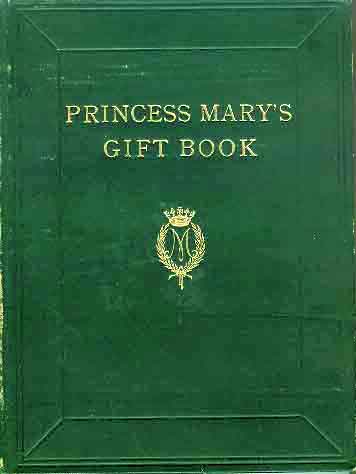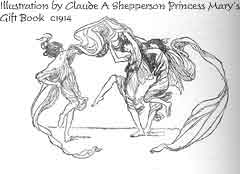The Cottingley Fairies Hoax
When it comes to the paranormal the evidence always amounts to more or less the same thing: the word of “reliable witnesses.” Whenever a UFO is spotted, whenever a ghost is encountered, whenever psychic powers are put on display, there is never a piece unequivocal, solid evidence. What little physical evidence exists is always weak and open to interpretation; however, the testimony of reliable witnesses is bulletproof, according to people that believe in the paranormal. There’s no reason to think people are lying when they make these claims, so they should be believed.
When I hear the phrase “reliable witness” my stomach goes sour. I’ve written about this before, but when it comes down to it, I’ve seen and heard too many weird people say too many weird things to just have blind faith that someone talking about space men or ghosts is telling me the truth. When my Aunt Helen tells me we’re having pierogies for dinner, I don’t believe her until I see the onions frying in the pan.
But you don’t have to have lived a life of bitterness to get a thick, blind-faith resistant callous over your brain like I’ve done. Here’s a perfect example of two “reliable witnesses” that were full of baloney that you should remember every time you hear someone, no matter how believable they seem, make some ridiculous claim.
It was the summer of 1917. Elsie Wright, 16, and cousin Frances Griffiths, 10, lived together in a place called Cottingley, England. Elise’s father, apparently a good and reasonable man, chided the two girls for constantly telling him that when they went out to play in nearby Cottingley Glen they were joined by a troupe of fairies. Not to be outdone, the girls borrowed a camera as they went out to play one day. No-one thought much of it until the father developed one of the photos in his home darkroom. I can only imagine the look on his face as the picture slowly appeared to reveal Frances sitting in front of a bush as four little fairies danced in front of her, cavorting, flapping their wings, and playing musical instruments.
Over time the girls produced five photos, showing Frances with the dancing fairies, Elsie shaking hands with a gnome, two of one of the girls with a single fairy, and a fifth picture of two fairies dancing in what looks like a bird’s nest.
Mr. Wright was unimpressed. He didn’t believe the girls, no matter what their photos said, and the matter, to him, was settled. The pictures went into a drawer for two years until Elsie’s mother dusted them off and brought them to a religious meeting. Being a Theosophist, she believed that dwarves, gnomes, fairies, imps, goblins, and all manner of other goofy creatures interacted with human beings on a daily basis. This is probably where the two girls got the idea in the first place.
Anyway, she brought the photos to the meeting and the place erupted. Everyone was shocked at this indisputable proof that fairies existed. The two girls were well mannered, decent children with no previous history of mental disorders, lying, or other immoral behavior. They were, so to speak, the most “reliable witnesses” of all time, their story credible. Who would believe two innocent-looking, charming young girls would lie about such a thing? Nobody, that’s who.
The world was afire over the photos. Sir Arthur Conan Doyle, author of the Sherlock Holmes series and, up to now, proponent of logic and reason, went absolutely batty over them, writing the girls several letters and singing their praises to all who would listen. He published several articles on the subject and in 1922 expanded them into a full-length book, The Coming of the Fairies. If you know where I can get a copy, you will get my eternal thanks if you could email me and let me know where.
The photographs were examined by a number of experts in such matters, who declared that there was no evidence that the original photographic negatives had been retouched, or that they were double exposures, or anything other manner of forgery. Since there was no trickery in the photographic aspect and the two “reliable witnesses” told the same story, everyone believed them. The world had irrefutable proof that fairies existed. The grandfathers of the kinds of people that believe space aliens come down to abduct our cattle on a nightly basis were absolutely convinced that fairies from another dimension inhabited our world.
The mystery, if you can call it that, went unsolved for decades, until both girls were in their old age. In 1976 the two girls were asked in they had “in any way fabricated those photographs.” Elsie was quite firm that the photos were real, but Frances began to waver. Her reply was evasive and rhetorical, asking only how such a thing would have been possible.
March 1983: in a newspaper article Frances cracked and admitted that the photos were fake, that there had never really been any fairies. At first refusing to comment, Elsie gave in about a month later and verified the story: they hadn’t ever seen anything. It was all a hoax.
But how did they do it? It’s almost embarrassingly simple: they traced pictures of fairies onto paper, cut them out, stood them up with hatpins, and then took the photos. There was no doctoring of the negatives, which so many skeptics had expected, but there was yet doctoring of the photos. They had seen fairies, all right; they had seen them on page 104 of Princess Mary’s Gift Book, a collection of stories from a variety of authors published by Princess Mary during the Great War. Proceeds went to a women’s fund but that’s not the point: the fairies were paper drawings, not genuine sprites.
I’m sure you can see where I’m going with this. Paranormal enthusiasts constantly rely on “reliable witnesses” to support their outrageous claims. Here we have an example of the most reliable type of witness possible, that is to say young girls with nothing to gain from telling the story and no history of making bizarre claims, who were in fact perpetrating a hoax. This should make it clear that “reliable witnesses” are not as reliable as others would have you believe. Of course I’m aware that not everyone who makes an outlandish claim is lying just because these two girls lied once. But they are an example of human behavior, a symptom of a greater problem, and that is what is important.
When I hear someone repeat a bizarre claim, whether it be about UFOs and space men, Bigfoot, conspiracy theories, ghosts, psychic powers, or whatever, I wait until they tell me why the believe. It’s almost always because they heard about whatever the subject is from someone personally involved in it, and that the person seems so honest, so trustworthy, that they take the witnesses’ word for it without any hard proof.
When I hear people say this, that they believe something because they were told to by a trustworthy stranger, my eyes cloud over. A hazy image forms on the inside of my eyeball, and for a moment, all I can see is Frances Griffiths smiling at me while surrounded by dancing fairies. I admit that this makes it hard to read certain books, but it is something I would not trade for anything in the world. It’s something that more people need.
Be seeing you.
Above: The five images of the Cottingley Fairies, in order.
Below: The cover of Queen Mary's Gift Book, with poor images of two plates showing fairies.


Reader Comments:
Hi, I happened across your site while casually looking up the story of the fairies hoax and noticed you were interested a copy of The Coming of the Fairies. I don't know if it'll suit your purposes but someone has posted a very high-quality PDF of it, now that it's in the public domain. It can be found in this and several other formats here.
Andy